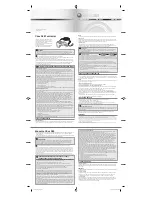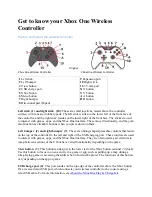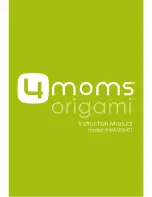
Page 1 of 4
PR3-E Series
SPM
X20109
30kW and 36kW HVAC RANGE
3-PHASE BURST FIRE POWER CONTROLLER
RoHS
Compliant
Sample Photo
– PR3-E-27kW
INTRODUCTION
The PR3-E S/SP/SPM range of thyristor stacks
provide full, seamless control, of three phase,
resistive loads using a two thirds control technique.
Control of the power level is either by a dc signal or
by manual control using a 5k
Ω potentiometer. The
PR3-E burst firing control stacks use fast pulse, zero
volts switching technology, to minimise flicker and
eliminate RFI problems. The controllers also
incorporate an automatically resetting temperature
trip, integral semiconductor fuses, and an integral
volt free trip/enable input for wiring of an external
thermal trip. The range contains two power ratings:
30kW and 36kW. For each power rating, the SPM
(Standard Plus Monitoring) version - includes HS
fuses, internal power supply and SCR/HS Fuse
monitoring. All have easy access to signal & power
terminals for simple installation.
APPLICATIONS
Suitable for 3-wire, 3-phase floating-star or closed-delta configured resistive loads. This includes the Heating, Ventilating and Air
Conditioning (HVAC) market for air curtain applications, but also for furnaces, ovens, dryers and hot plates.
FUNCTION
Trip/Enable Input
This input should be driven by a volt free contact. When the contact is closed the unit is enabled to supply power to the load.
When the contact is open this disables the power to the load. If this input is not used a wire link must be fitted to enable the
unit.
Alarm Relay Output (3-way terminal
– Volt Free Contacts, Normally Open (NO), Normally Closed (NC), Common
(COM).
The alarm circuit has voltage free relay contacts which have a 2A@125 V AC RMS rating. The alarm conditions which are
detected are phase loss (L1, L2, L3), fuse failure (L1, L3), device failure (L1, L3), over temperature and temperature sensor
error. The power to drive the alarm relay coil is obtained from the board power supply, which can be either internal or external.
L2 & L3 are used to power the internal, transformer based power supply, therefore when internally powered the loss of phase
L2 and L3 condition cannot be indicated as this results in a loss of power to the controller card.
Over Temperature Protection
When a heatsink temperature of above 90ºC is detected by the sensor, the alarms relay changes state and the Fault LED
pulses rapidly. The power to the load will be disconnected and will not be re-enabled until the temperature drops to 85ºC.
Temperature Sensor Loss
If the temperature sensor fails or becomes disconnected, the Fault LED changes to ON/OFF (fast pulsing) and the alarm relay
state changes.
Phase Loss with Auxiliary Supply
When any one of the three phase inputs is not present, the relay changes state and the Fault LED flashes with ON/OFF
bursts of 1.5 seconds. This is only functional with a remote supply (see below).
SCR/Fuse Monitoring
Fault and Status LED flash alternately and the alarm relay will change state. This condition indicates that either a HS fuse has
failed or a SCR open or short circuit failure has been detected.
NOTE: The fuse or device fault indication can also be caused by an open circuit load on Phase 1 or Phase 3.
Alarm Relay Fault Indication
If DIL switch SW1-4 is in the OFF position, the alarm relay will be energised with no fault present and hence the NO contact
will be closed and connected to the COM terminal. If DIL switch SW1-4 is in the ON position, the alarm relay will be de-
energised when no fault is present and hence the NO contact will be disconnected from the COM terminal. For either state of
SW1-4, the relay state toggles when an alarm condition is detected.
Remote Supply
If there is a requirement for the alarm relay and Fault LED to energise when a phase fault condition occurs, the SPM model
must be specified and an external 24V dc supply should be used.






















